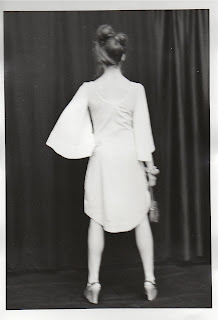I wanted to share a list of things I would have done differently with my natural dyeing adventure if I had known what I knew now. Here we go...
1. When you're in the
mordant process.. don't do it in an enclosed house with no ventilation.. for example, in the middle of winter at 2 am in the morning when you
really don't want to open all the windows in the house.
2. Using the same mordant for all fabrics. Do your research and find out what colors you really want to achieve. Different mordants (alum, copper, chrome, tin) will produce different results regardless of your dye bath. Also depending on the fiber you're using, you should use a certain mordant. (ex. alum + wool = sticky wool) Certain mordants can also break down the fibers causing them to become brittle.
I used alum on all of mine, for two reasons.
First because it's the least toxic of all.
Second, I needed to get this show on the road!
***With all that being said, don't plan on achieving any certain color, because there's a good chance you'll be disappointed, unless you're a pro or something. Natural dyeing is exactly that.. it's natural and what will happen, will happen.***
I've learned that it will be beautiful regardless.
 |
Remember this? I had no idea what I was getting in to!
2b. Ratios. Along with doing your research, ratios of mordant to water to amount of fabric are important. They can be the cause of stickiness and other problems. Fortunately, I didn't run into these problems because believe I am one with the fabric .. :) ... But it's possible, so just be aware. Possibly more conscious ratios would have given me a better gauge on predicted outcomes? |
3. Time. If you're going to do it, make sure you allow a few months for all your colors to be realized. Some roots need to soak for weeks before you begin.. and some fabrics need to soak for weeks to achieve the color you're wanting. You should also be aware of the season you're trying to dye in. Winter is very hard for obvious reasons. See
Iris roots for an example of a failed root probably because of the season.
4. Be Careful! Some dyes are light reactive. Your product can fade on you, or become deeper. I really think a pair of pants I made, dyed with madder root, have done this. Only, it's not all over, it's turned to a blend of peaches, pinks and light oranges. Looks like Sherbet really. Happy Mistake! I love Sherbet.
5. You might want to have a cheap-o blender exclusively for dyeing. My
madder root was not blended well enough so that could be one of the reasons I didn't achieve red. One of many reasons. I could make a whole post on what I did wrong with Madder root. Out of all of the dyes, I feel like it was the most touchy and sensitive of them all. It's all pretty touchy, though.. even the type of water you use can effect the outcome (well, tap, purified).
So, there's some of the biggest things I learned during this process. I could go on for days, but I think five is a good number.
One really awesome reason to Natural Dye Fabric...
It's really fun to talk about dyeing in everyday conversation. Example: Confused cashier at Dillon's, "Well, why do you need a bag full of just
onion skins?" My response, "I'm dyeing."
ahhahahahahhahahaahaha!
I'm thinking madder root might, after all, deserve a post of her own. I'll get to work on that. Hope you enjoyed seeing my process and mistakes! I can't wait to share the end result of all of this.. my
Senior Collection! Coming soon!
Thanks for reading! If you have any questions, shoot 'em at me!
M



















































